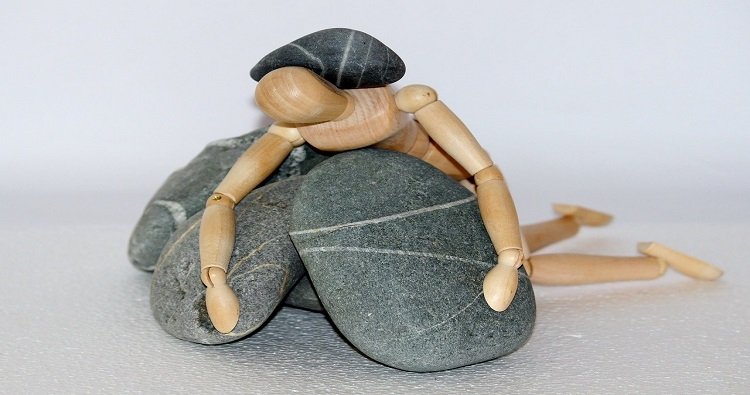- + 91 9958444373
- Malviya Road Dehradun, UK, India.
Blogs detail

SEASONAL AFFECTIVE DISORDER (SAD)
- 2020-06-12
Depressed when a season comes or goes!
With that depressing mood you may be felt hopeless, worthless, and lost interest in activities you once enjoyed and many others, it may be Seasonal affective Disorder (SAD) also diagnosed as seasonal depression.
Typically starting in the late fall and early winter and going away during the spring and summer. Depressive episodes linked to the summer can occur but are much less common than winter episodes of SAD.
Signs and Symptoms:
Seasonal Affective Disorder (SAD) is not considered as a separate disorder. It is a type of depression displaying a recurring seasonal pattern. Usually SAD is self-diagnosable, to be diagnosed with SAD, people must meet full criteria for major depression coinciding with specific seasons (appearing in the winter or summer months) for at least 2 years. Seasonal depressions must be much more frequent than any non-seasonal depressions.
Symptoms of Major Depression:
Mood: Feeling depressed most of the day, nearly every day
Feeling hopeless or worthless
Losing interest in activities you once enjoyed
Having frequent thoughts of death or suicide.
Sleep: Having problems with sleep.
Behavioural: Feeling sluggish or agitated
Having low energy.
Whole-body: Experiencing changes in your appetite or weight.
Also common: Having difficulty concentrating.
Symptoms of the Winter Pattern of SAD include:
Having low energy
Hypersomnia
Overeating
Weight gain
Craving for carbohydrates
Social withdrawal (feel like “hibernating”)
Symptoms of the less frequently occurring summer seasonal affective disorder include:
Poor appetite with associated weight loss
Insomnia
Agitation
Restlessness
Anxiety
Episodes of violent behaviour
Treatments and Therapies:
There are four major types of treatment for SAD:
Medication
Light therapy
Psychotherapy
Vitamin D
These may be used alone or in combination.
Psychotherapy
Cognitive-behavioural therapy (CBT) is a type of psychotherapy that is effective for SAD. Traditional cognitive behavioural therapy has been adapted for use with SAD (CBT-SAD). CBT-SAD relies on basic techniques of CBT such as identifying negative thoughts and replacing them with more positive thoughts along with a technique called behavioural activation. Behavioural activation seeks to help the person identify activities that are engaging and pleasurable, whether indoors or outdoors, to improve coping with winter.
What Health professional say about SAD?
According to Dr K.K. Aggarwal, former president of the IMA says: “The human body, its metabolism, and hormones react to changing seasons. This further leads to changes in mood and behaviour. Just as certain people become irritable and aggressive in summer, others feel low and lethargic during the monsoon and winter.”
Tips from health professionals to manage the seasonal affective disorder
Stay active: Go for a rapid walk, Get out and enjoy your community, do other physical activities.
Daylight exposure to the body: The lack of sun exposure is part of what causes SAD and soaking up as much as you can, can lessen your symptoms. Go on the terrace for batter sunlight during winter days.
Eat healthily: Comfort foods don’t have to be loaded with extra calories and lots of sugar and fat. Get creative and look for hearty, low-calorie recipes that are easy to prepare. Prefer eating seasonal fruits and vegetables.
Get socialize: Play with kids or pets, do some group activities, talk about your mental health with your friends and family.
A practising psychologist can help you to understand the areas of problems related to psychological problems, behavioural problems and then develop individual or group activities that can help you better. A psychologist can help you to understand unhealthy behaviours and develop a coping mechanism that best suit you. Psychologists use a variety of evidence-based treatment methods. Most commonly cognitive behaviour therapy to help you out with your mental health problems. Psychologists, who have desired qualifications as per the rules of different countries.
Contact now
We are a group of health professionals, including Psychologists, Clinical psychologist, Rehabilitation Psychologist, Counsellors, Mindfulness Experts and Social Workers. We are working since 2018 in India to foster mental health.
Contact Us
recent blogs
-

SADNESS AND DEPRESSION ARE DIFFERENT!
2020-06-16 -

ALCOHOL USE DISORDER (AUD)
2020-06-19 -

SEASONAL AFFECTIVE DISORDER (SAD)
2020-06-12 -

UNDERSTANDING MINDFULNESS MEDITATION
2020-06-03 -

BURDEN OF DEPRESSION
2020-06-17







